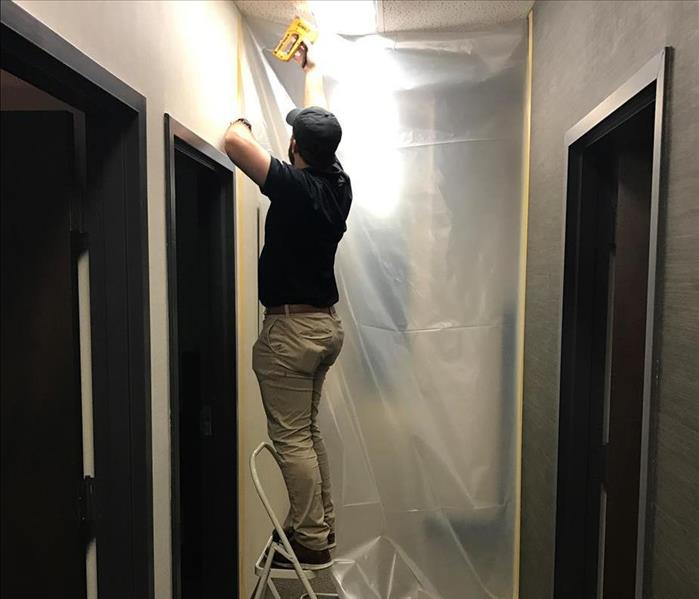How to effectively utilize Drying Chambers
4/1/2019 (Permalink)
One way to gain efficiency in a drying environment is to set up a drying chamber. A drying chamber is defined as the area in which the Project Manager will manipulate and control temperature, humidity and air flow to promote evaporation. Drying Chambers can be set up in a number of ways, including:
- Closing doors
- Taping up plastic sheeting
- Erecting semi-permanent barriers with plastic sheeting and expanding poles (containment)
Inside the drying chamber is the best location for basic wet (salvageable) furnishing and contents. They will dry along with the structure.
Drying chambers can be very effective for large losses. If only a portion of the building is affected, we can contain the affected area to help speed up the drying process. Drying chambers can be an effective procedure for containing the potential spread of contaminants. Isolate contaminated materials by erecting containment barriers. Containment is even more effective when negative air pressure in maintained in the contaminated area. Negative air pressure is produced by exhausting air from the area with an air filtration device (AFD) while using barriers to restrict incoming air.





 24/7 Emergency Service
24/7 Emergency Service